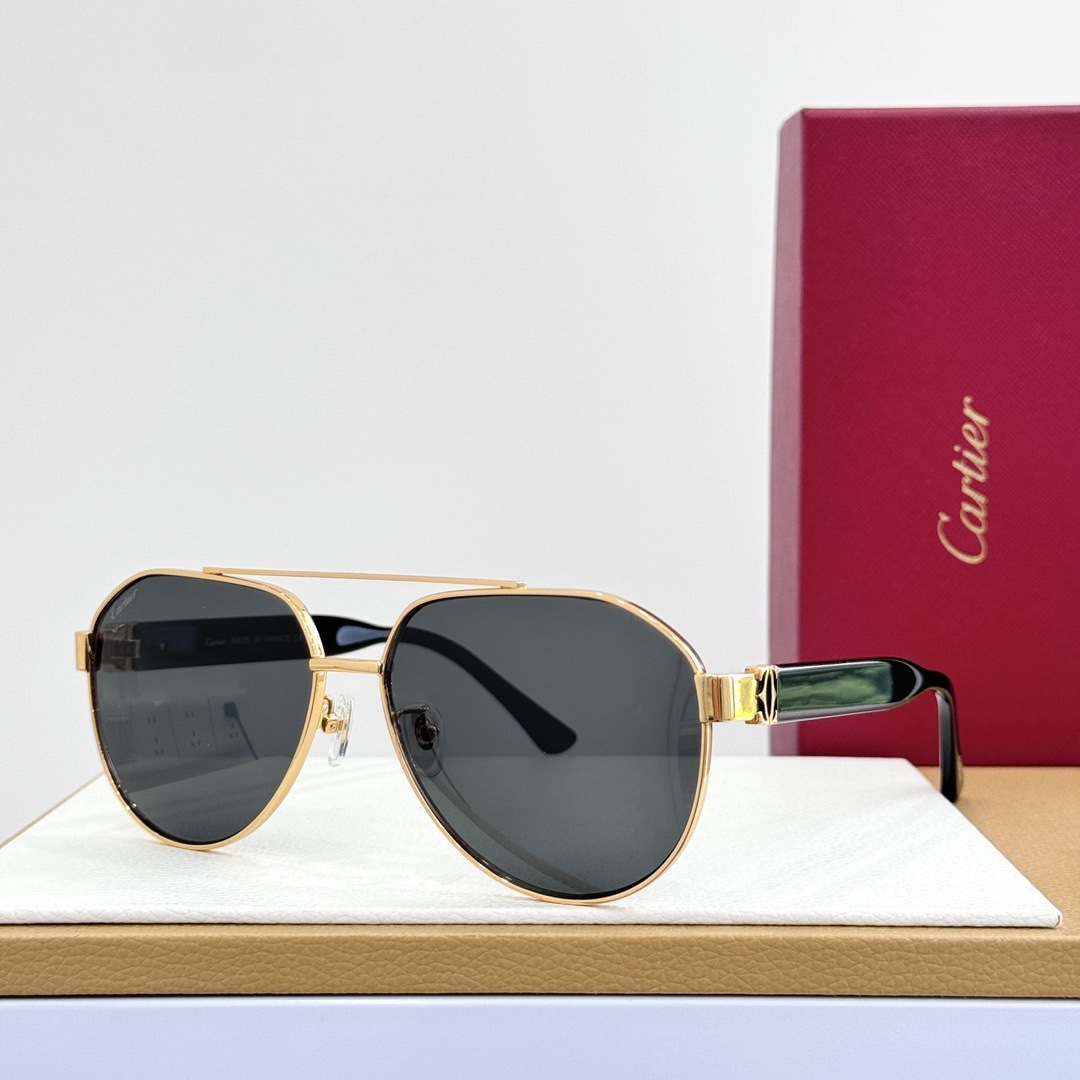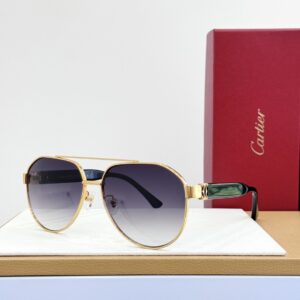The Rise of Replicas: Understanding the Popularity of Counterfeit Sunglasses
The phenomenon of counterfeit sunglasses has experienced a remarkable surge in recent years, particularly in North America. This trend reflects broader consumer behavior towards replica products, a movement often driven by economic factors and shifting attitudes toward branding. For many consumers, the appeal of counterfeit sunglasses stems from their affordability. Genuine designer eyewear often comes with a hefty price tag, making it inaccessible for a significant portion of the population. In contrast, replicas provide an attractive alternative that allows individuals to enjoy a similar aesthetic without the substantial financial investment.
Additionally, the changing consumer mindset plays a crucial role in this rise. Many modern consumers have become increasingly indifferent to brand loyalty and more focused on the visible attributes of a product. This trend is particularly prevalent among younger demographics, who often see counterfeit sunglasses as a fashionable accessory rather than a symbol of prestige. The perception that these replicas can deliver comparable style without the associated costs has led to their widespread acceptance in everyday fashion.
Furthermore, the influence of social media and celebrity culture cannot be overlooked. The rapid dissemination of trends through platforms like Instagram and TikTok has fueled the popularity of counterfeit items. Influencers often showcase stylish looks that prominently feature replica sunglasses, inadvertently endorsing them to their followers. This visibility creates a desire among consumers to replicate the looks they admire, further driving demand for counterfeit products.
Finally, while replicas vary in quality, many counterfeit sunglasses are surprisingly well-made. Advances in manufacturing have allowed some fake products to closely mimic genuine designs, enhancing their appeal. As consumers continue to prioritize style and affordability over brand allegiance, it is clear that the popularity of counterfeit sunglasses represents a significant shift in market dynamics within North America.
Regional Variations in Addressing Counterfeit Sunglasses
The issue of counterfeit sunglasses has garnered significant attention across various regions in North America, leading to diverse responses shaped by local legal frameworks, enforcement mechanisms, and consumer awareness campaigns. Major metropolitan areas, often characterized by higher consumer spending and brand culture, generally have more robust legal structures to address counterfeit products. For instance, cities like New York and Los Angeles have enacted stringent laws against the sale of counterfeit goods, supported by local law enforcement agencies that actively engage in raids and seizures. This concentrated effort aims to protect both consumers and legitimate businesses from the harm caused by replicas.
In contrast, rural regions may display a different set of challenges and responses. These areas often have less regulatory oversight, resulting in a higher tolerance for counterfeit sunglasses, especially in tourist-heavy locales. Here, the prevalence of replica products may be linked to socioeconomic factors—limited access to legitimate retail options often pushes consumers towards cheaper alternatives, including counterfeits. Though rural authorities recognize the detrimental effects of counterfeit goods, enforcement is frequently hampered by resource constraints and limited awareness among residents regarding the legal implications of purchasing fakes.
Furthermore, consumer education plays a crucial role in combating the distribution of counterfeit sunglasses. Various organizations, both governmental and non-profit, have launched campaigns aimed at informing the public about the risks associated with counterfeit products, such as poor quality and potential health hazards. These initiatives are essential in regions where access to information may be limited. By equipping consumers with knowledge, the hope is to reduce the demand for replicas, ultimately guiding them towards legitimate products. Effective collaboration between local authorities, brands, and consumers is paramount for a unified approach to curbing the prevalence of counterfeit sunglasses throughout North America.
Consumer Perspectives: Attitudes Towards Counterfeit Sunglasses
The growing market for counterfeit sunglasses has sparked significant interest in understanding consumer attitudes towards these replicas. Many individuals express varied motivations for purchasing counterfeit products, particularly in the realm of fashion accessories. A major driving force is often the cost consideration; replicas can be purchased at a fraction of the price of authentic brands. This makes counterfeit sunglasses appealing to consumers across different demographics, particularly younger individuals who may be more price-sensitive.
Surveys reveal that many consumers view counterfeit sunglasses as an acceptable alternative, especially if they closely resemble the original product. This perception is compounded by the notion of “fashion accessibility,” where individuals seek to maintain a stylish appearance without incurring the financial burden associated with luxury brands. Furthermore, interviews conducted with consumers illustrate a nuanced understanding of brand loyalty, with some individuals prioritizing the aesthetic quality and functionality of sunglasses over the brand name.
However, there are perceived risks associated with purchasing counterfeit products. Concerns about quality, durability, and the potential health implications of substandard lenses are prevalent among consumers. Additionally, ethical considerations play a pivotal role in consumer attitudes. Some individuals express discomfort with the idea of supporting an industry that undermines legitimate brands and businesses. This ethical stance may vary significantly across age groups and income levels, with older consumers and higher-income individuals typically exhibiting greater awareness and concern regarding ethical consumerism.
Geographical location also influences attitudes toward counterfeit sunglasses. Urban consumers may have different views compared to those in rural areas, as urban centers often have greater exposure to fashion trends and brand culture. Thus, the decision to purchase counterfeit sunglasses is a complex interplay of motivations, perceptions of value, and ethical concerns that reflects broader societal trends in consumer behavior.
The Future of Replicas: Trends and Predictions in the Counterfeit Sunglasses Market
The counterfeit sunglasses market in North America is poised for significant evolution as emerging trends come to the forefront. One of the primary factors influencing this transformation is the rapid advancement of technology in production and distribution. With the rise of 3D printing and improved craftsmanship, replicating high-end sunglasses has become more accessible, making it easier for counterfeiters to produce convincing replicas that can seamlessly infiltrate the market. This trend raises questions about consumer preferences and the value that individuals place on authenticity versus affordability.
As consumers increasingly prioritize sustainability and ethical purchasing, it is likely that the counterfeit sunglasses market will adapt to these evolving preferences. There may be a shift towards replicas that emphasize environmentally friendly materials or brands that promote transparency in their production processes. This evolution could reduce the stigma surrounding counterfeit items if they align with ethical consumerism values. Additionally, younger generations, who are often more tech-savvy, may become more discerning about their purchases, potentially driving demand for replicas that reflect both style and sustainability.
Policy changes will also play a crucial role in shaping the future of counterfeit sunglasses. Lawmakers are becoming more aware of the economic implications and public health concerns associated with counterfeit goods. Stricter regulations may emerge, targeting online marketplaces that facilitate the sale of replicas. These changes could create a dual impact: potentially reducing the availability of counterfeit sunglasses while prompting counterfeiters to become more resourceful in their distribution methods.
In navigating the complexities of the counterfeit sunglasses landscape, it is essential for brands, lawmakers, and consumers to collaborate. Brands should focus on enhancing their market presence and educating consumers about the risks of counterfeiting. Lawmakers must advocate for robust intellectual property protections, while consumers should remain vigilant, seeking authenticity to support trusted brands. Ultimately, understanding these trends will be vital for all stakeholders in the coming years.



